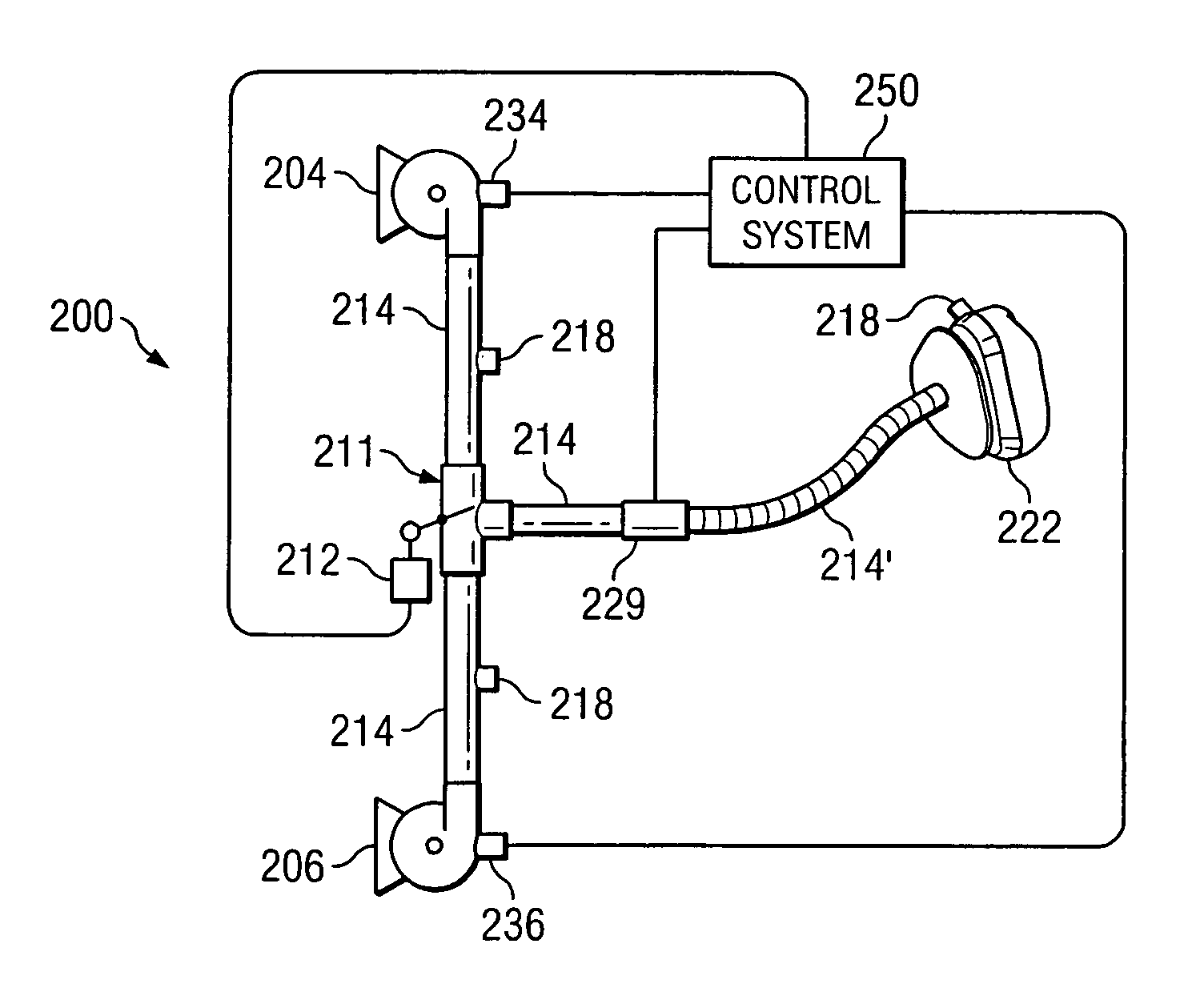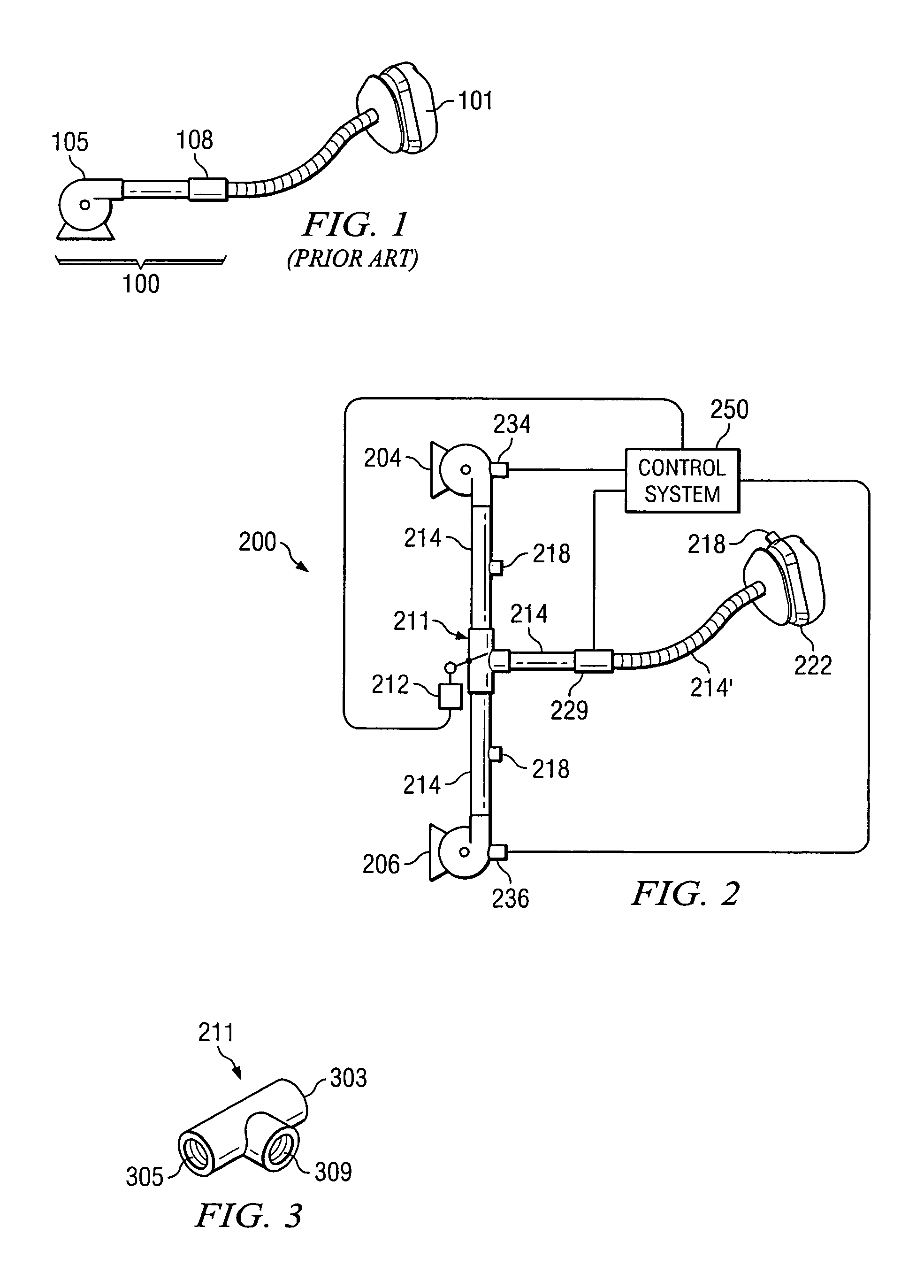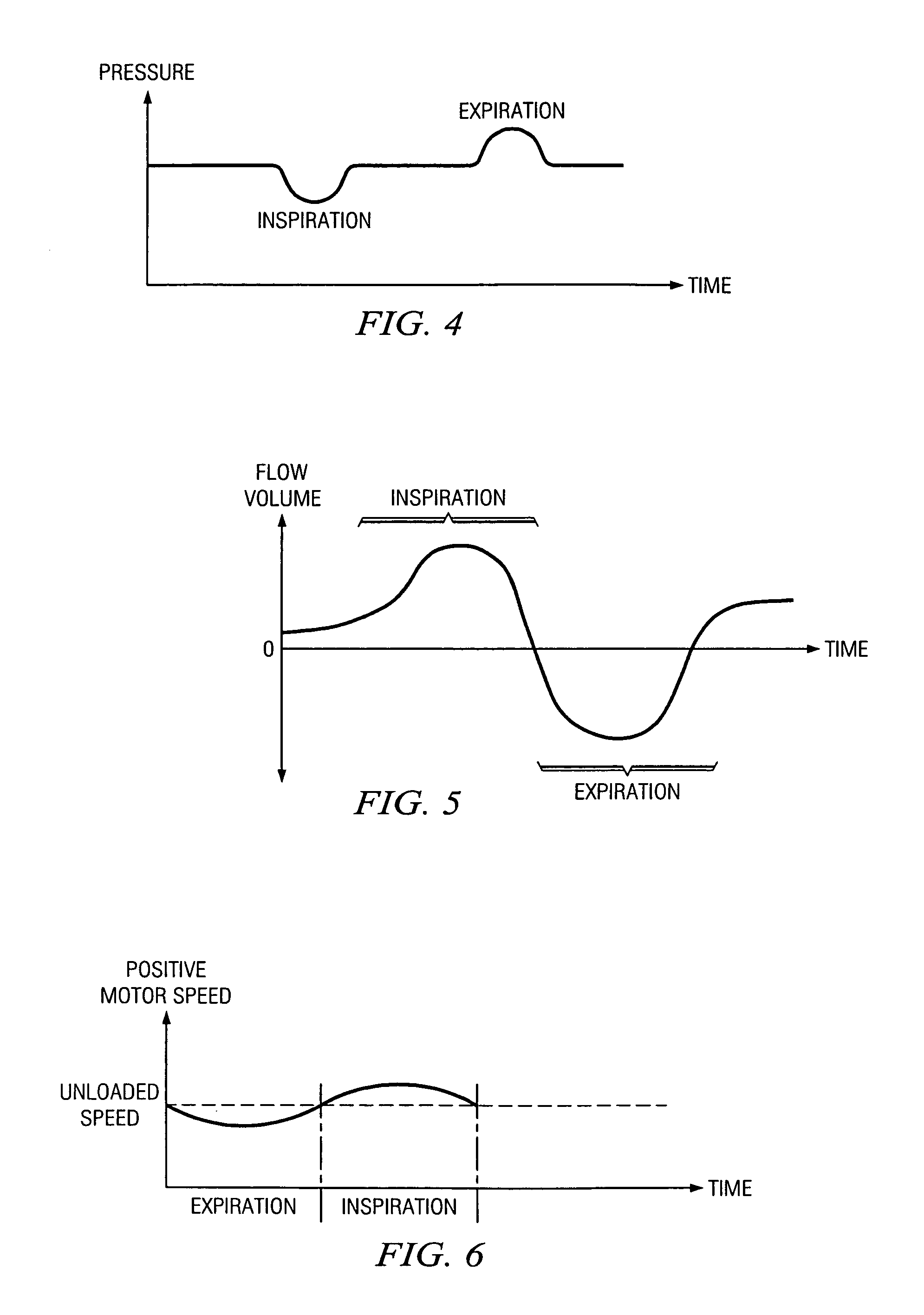Ventilator with dual gas supply
a ventilator and gas supply technology, applied in the direction of valve details, valve arrangement, operating means/releasing devices, etc., can solve the problems of higher motor wear, inability to adjust the speed and output quickly enough to correct pressure changes, and the ventilator b>100/b> of the prior art has drawbacks, so as to achieve the effect of reducing the difference in gas supply
- Summary
- Abstract
- Description
- Claims
- Application Information
AI Technical Summary
Benefits of technology
Problems solved by technology
Method used
Image
Examples
second embodiment
[0039]In a second embodiment, the feedback sensor 229 is a flow volume sensor positioned on or between the diverter valve 211 and the gas delivery device 222. The flow volume sensor 229 measures a flow volume of gas. The flow volume may be used to signify pressure changes and determine when the patient is inhaling or exhaling (see FIG. 5 and accompanying discussion below). The flow volume sensor 229 may generate a feedback signal that is substantially related to the gas supply flow volume. The feedback signal may be compared to a predetermined or desired flow volume or flow volume profile in order to generate a flow volume difference. The flow volume difference may be used to actuate the diverter valve 211 according to any known feedback and control algorithm.
[0040]FIG. 5 is a flow volume graph of a representative flow volume during a typical breathing cycle. This may be the flow volume at the gas delivery device 222. As can be seen from the graph, the gas flow volume varies regular...
third embodiment
[0041]In a third embodiment, one or more motor speed sensors 234 and 236 are used to control the diverter valve 211. In the two motor speed sensors embodiment, for example, the point in time when the motor speed of the positive relative pressure gas supply 204 drops, patient inhalation has stopped and exhalation has begun. As the positive pressure continues to be supplied, the pressure in the ventilator increases when the patient stops inhaling (i.e., an airflow backup occurs). This increase in pressure will cause the motor of the positive relative pressure gas supply 204 to slow down. Therefore, the control system 250 may now control the actuator 212 and move the diverter valve 211 to select the negative pressure port 305 and the negative relative pressure gas supply 206, or select a greater opening percentage for the negative pressure port 305.
[0042]Conversely, when the motor speed of the negative relative pressure gas supply 206 drops, as detected by the motor speed sensor 236, e...
PUM
 Login to View More
Login to View More Abstract
Description
Claims
Application Information
 Login to View More
Login to View More - R&D
- Intellectual Property
- Life Sciences
- Materials
- Tech Scout
- Unparalleled Data Quality
- Higher Quality Content
- 60% Fewer Hallucinations
Browse by: Latest US Patents, China's latest patents, Technical Efficacy Thesaurus, Application Domain, Technology Topic, Popular Technical Reports.
© 2025 PatSnap. All rights reserved.Legal|Privacy policy|Modern Slavery Act Transparency Statement|Sitemap|About US| Contact US: help@patsnap.com



